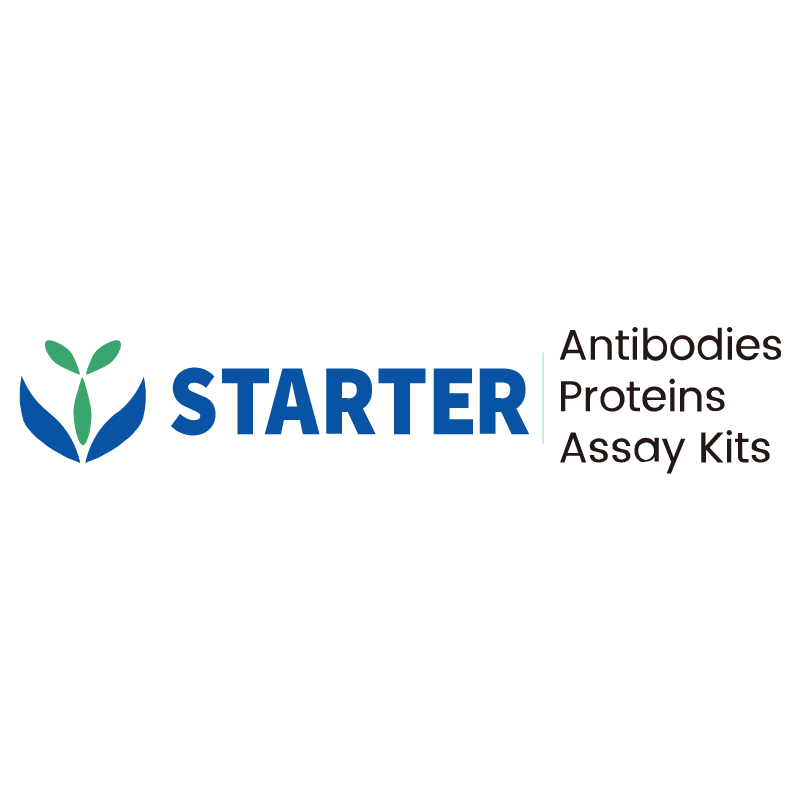WB result of JAK1 Recombinant Rabbit mAb
Primary antibody: JAK1 Recombinant Rabbit mAb at 1/1000 dilution
Lane 1: 22Rv1 whole cell lysate 20 µg
Lane 2: Ramos whole cell lysate 20 µg
Lane 3: A431 whole cell lysate 20 µg
Negative control: 22Rv1 whole cell lysate
Secondary antibody: Goat Anti-rabbit IgG, (H+L), HRP conjugated at 1/10000 dilution
Predicted MW: 133 kDa
Observed MW: 120 kDa
Product Details
Product Details
Product Specification
| Host | Rabbit |
| Antigen | JAK1 |
| Synonyms | Tyrosine-protein kinase JAK1; Janus kinase 1 (JAK-1); JAK1A; JAK1B |
| Immunogen | Synthetic Peptide |
| Accession | P23458 |
| Clone Number | S-1819-142 |
| Antibody Type | Recombinant mAb |
| Isotype | IgG |
| Application | WB |
| Reactivity | Hu, Ms, Rt |
| Positive Sample | Ramos, A431, NIH/3T3, mouse kidney, PC-12, rat kidney |
| Predicted Reactivity | Bb, Bv, Ct, Cz, Gor, GP, Gt, Mq |
| Purification | Protein A |
| Concentration | 0.5 mg/ml |
| Conjugation | Unconjugated |
| Physical Appearance | Liquid |
| Storage Buffer | PBS, 40% Glycerol, 0.05% BSA, 0.03% Proclin 300 |
| Stability & Storage | 12 months from date of receipt / reconstitution, -20 °C as supplied |
Dilution
| application | dilution | species |
| WB | 1:1000 | Hu, Ms, Rt |
| IHC-P | 1:100 | Hu, Ms |
Background
JAK1 protein, also known as Janus kinase 1, is a non-receptor tyrosine kinase that plays a crucial role in the JAK-STAT signaling pathway, which is involved in the transmission of signals from the cell surface to the nucleus in response to cytokines and growth factors. JAK1 is essential for the activation of STAT proteins, which are key regulators of gene expression. It is involved in the signaling of interferon-alpha/beta, interferon-gamma, and various cytokines, making it a central player in immune responses, inflammation, and hematopoiesis. JAK1 is also implicated in the development of several diseases, including autoinflammatory syndromes, immune dysregulation, and eosinophilia. Its dysregulation can lead to conditions such as breast implant-associated anaplastic large cell lymphoma. JAK1 is a therapeutic target for alleviating cytokine storms and is involved in the regulation of genes that mediate inflammation, epithelial remodeling, and metastatic cancer progression. The kinase activity of JAK1 is directly inhibited by the suppressor of cytokine signaling 1 (SOCS1) protein. Alternative splicing results in multiple transcript variants.
Picture
Picture
Western Blot
WB result of JAK1 Recombinant Rabbit mAb
Primary antibody: JAK1 Recombinant Rabbit mAb at 1/1000 dilution
Lane 1: NIH/3T3 whole cell lysate 20 µg
Lane 2: mouse kidney lysate 20 µg
Secondary antibody: Goat Anti-rabbit IgG, (H+L), HRP conjugated at 1/10000 dilution
Predicted MW: 133 kDa
Observed MW: 130 kDa
WB result of JAK1 Recombinant Rabbit mAb
Primary antibody: JAK1 Recombinant Rabbit mAb at 1/1000 dilution
Lane 1: PC-12 whole cell lysate 20 µg
Lane 2: rat kidney lysate 20 µg
Secondary antibody: Goat Anti-rabbit IgG, (H+L), HRP conjugated at 1/10000 dilution
Predicted MW: 133 kDa
Observed MW: 130 kDa
This blot was developed with high sensitivity substrate
Immunohistochemistry
IHC shows positive staining in paraffin-embedded human breast cancer. Anti-JAK1 antibody was used at 1/100 dilution, followed by a HRP Polymer for Mouse & Rabbit IgG (ready to use). Counterstained with hematoxylin. Heat mediated antigen retrieval with Tris/EDTA buffer pH9.0 was performed before commencing with IHC staining protocol.
IHC shows positive staining in paraffin-embedded human pancreatic cancer. Anti-JAK1 antibody was used at 1/100 dilution, followed by a HRP Polymer for Mouse & Rabbit IgG (ready to use). Counterstained with hematoxylin. Heat mediated antigen retrieval with Tris/EDTA buffer pH9.0 was performed before commencing with IHC staining protocol.
IHC shows positive staining in paraffin-embedded mouse cerebral cortex. Anti-JAK1 antibody was used at 1/100 dilution, followed by a HRP Polymer for Mouse & Rabbit IgG (ready to use). Counterstained with hematoxylin. Heat mediated antigen retrieval with Tris/EDTA buffer pH9.0 was performed before commencing with IHC staining protocol.


